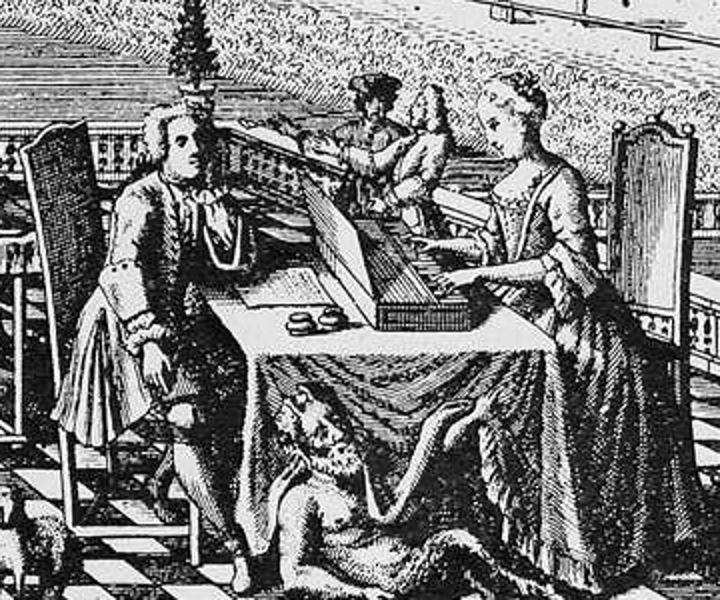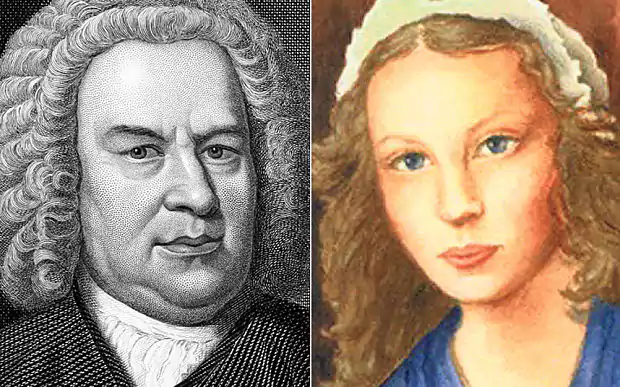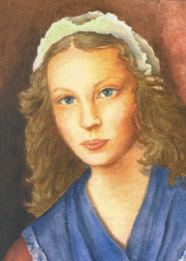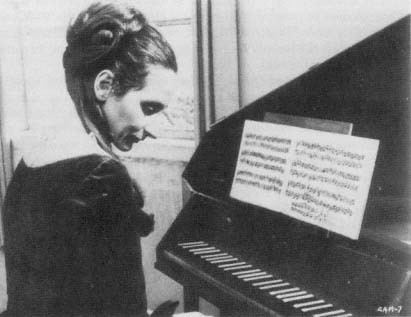Name Anna Bach | Role Singer | |
 | ||
Children Johann Christian Bach Movies The Chronicle of Anna Magdalena Bach Parents Johann Caspar Wilcke, Margaretha Elisabeth Liebe Similar People Johann Sebastian Bach, Maria Barbara Bach, Johann Ambrosius Bach, Johann Christian Bach, Wilhelm Friedemann Bach | ||
Bist du bei mir from the Anna Magdalena Bach Book (attr. Stölzel), Voices of Music
Anna Magdalena Bach (nee Wilcke or Wilcken) (22 September 1701 – 22 February 1760) was an accomplished singer and the second wife of Johann Sebastian Bach.
Contents
- Bist du bei mir from the Anna Magdalena Bach Book attr Stlzel Voices of Music
- Notebook of anna magdalena bach 02 p barton feurich 218 harmonic pedal piano
- Biography
- A possible composer
- References

Notebook of anna magdalena bach 02 p barton feurich 218 harmonic pedal piano
Biography

Anna Magdalena Wilcke was born at Zeitz, in the Electorate of Saxony, to a musical family. Her father, Johann Caspar Wilcke, was a trumpet player, who had a career at the courts of Zeitz and Weisenfels. Her mother, Margaretha Elisabeth Liebe, was the daughter of an organist. Little is known about her early musical education. Johann Sebastian Bach had been working as Kapellmeister or director of music at the court of Kothen since December 1717. By 1721 Anna Magdalena was employed as a singer (soprano) also at Kothen. It is certainly possible that Johann Sebastian Bach first heard her sing at Weisenfels during this time.

Bach married Anna on December 3, 1721, 17 months after the death of his first wife, Maria Barbara Bach. In 1723, Bach was appointed Cantor of the Thomasschule in Leipzig.
Anna Magdalena continued to sing professionally after her marriage. For example, she returned to Kothen in 1729 to sing at Prince Leopold's funeral. The Bachs' shared interest in music contributed to their happy marriage. She regularly worked as a copyist, transcribing her husband's music. He wrote a number of compositions dedicated to her, most notably the two Notenbuchlein fur Anna Magdalena Bach. During the Bach family's time in Leipzig, Anna Magdalena organized regular musical evenings featuring the whole family playing and singing together with visiting friends. The Bach house became a musical centre in Leipzig.
Apart from music, her interests included gardening.
Together they raised the children from his first marriage and had 13 children of their own from 1723 to 1742, seven of whom died at a young age:
After Bach's death in 1750, his sons came into conflict and moved on in separate directions, leaving Anna Magdalena alone with her two youngest daughters and her stepdaughter from Bach's first marriage. While they remained loyal to her, nobody else in the family helped her financially. Anna Magdalena became increasingly dependent upon charity and handouts from the city council; when she died on February 27, 1760, she was buried in an unmarked pauper's grave at Leipzig's Johanniskirche (St. John's Church). The church was destroyed by Allied bombing during World War II.
A possible composer
Recently, it has been suggested that Anna Magdalena Bach composed several musical pieces bearing her husband's name: Professor Martin Jarvis of the School of Music at Charles Darwin University in Darwin, Australia, claims that she composed the famed six cello suites (BWV 1007–1012) and was involved with the composition of the aria from the Goldberg Variations (BWV 988) and the opening prelude of The Well-Tempered Clavier.
These claims have been dismissed by Christoph Wolff, who said,
I am sick and tired of this stupid thesis. When I served as director of the Leipzig Bach Archive from 2001 to 2013, I and my colleagues there extensively refuted the basic premises of the thesis, on grounds of documents, manuscript sources, and musical grounds. There is not a shred of evidence, but Jarvis doesn’t give up despite the fact that several years ago, at a Bach conference in Oxford, a room full of serious Bach scholars gave him an embarrassing showdown.Writing in the Guardian, cellist Steven Isserlis said, "I’m afraid that his theory is pure rubbish," and continued, "How can anybody take this shoddy material seriously?"
